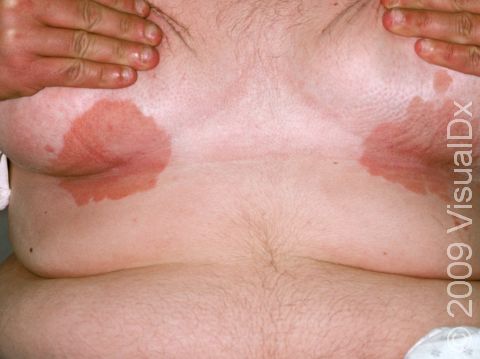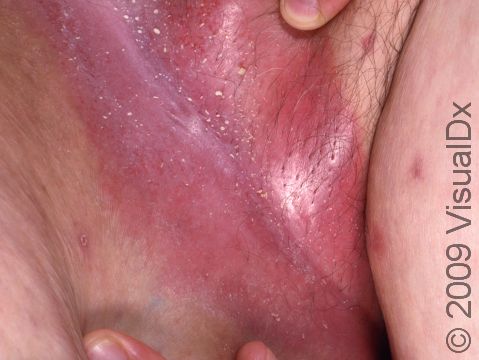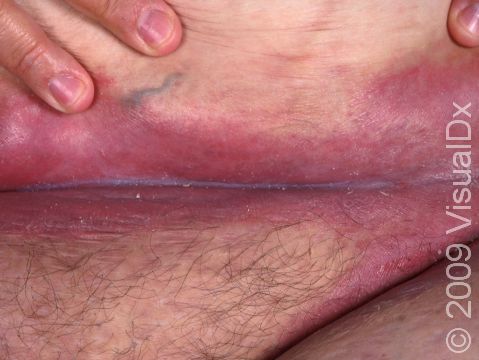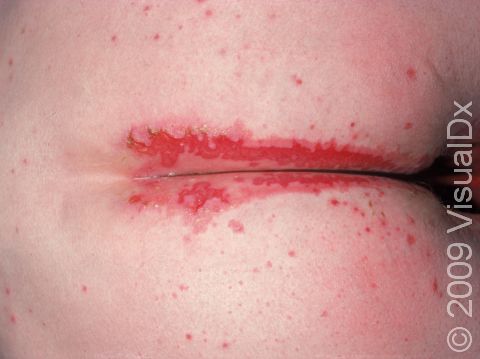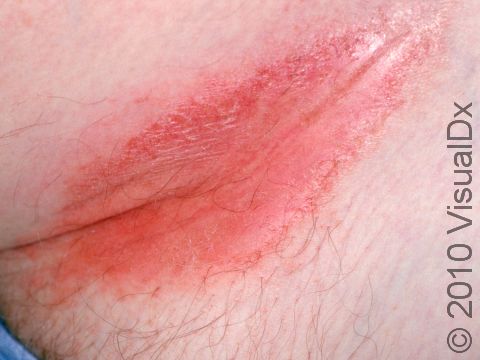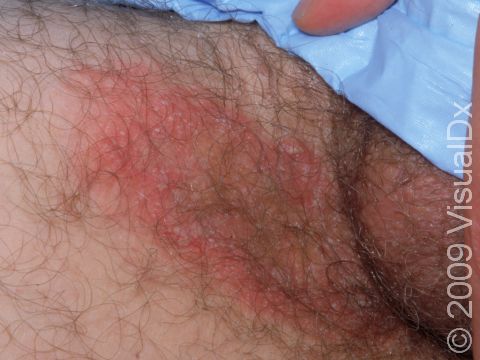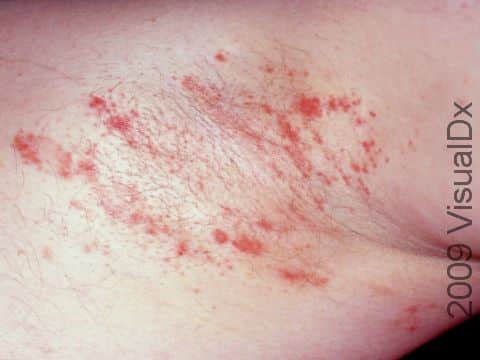Intertrigo
Intertrigo is a rash that results from irritation of the skin in body folds (eg, armpits, under the breasts, belly, buttocks, groin, and sometimes between fingers or toes). Intertrigo can be worsened by any conditions causing increased heat, wetness, and friction. Areas affected by intertrigo may also become infected with yeast or bacteria.
Who's At Risk?
Intertrigo is most frequently seen in people who are overweight, people with diabetes, people who spend a lot of time in bed, and those who wear diapers. It can occur in individuals wearing or using anything that causes friction or holds moisture against the skin’s surface.
Signs & Symptoms
Intertrigo is most commonly seen in skin fold areas, where skin becomes inflamed, such as under the arms, in the thigh and groin folds, under breast or belly folds, and in neck creases. Redness or skin darkening are common, and there may be breaks in the skin. The area may ooze or be sore or itchy.
Self-Care Guidelines
The goals of treatment are aimed at eliminating or reducing friction, moisture, and heat in skin folds.
- Gently cleanse the affected areas daily with mild soap (eg, Nature by Canus, Vanicream bar soap) or soap substitutes (eg, Cetaphil).
- Dry the areas well. Additionally, wearing absorbent cotton or fabric may help (as long as fabrics are changed if they become damp). Mild antiperspirants and non-talc drying powders may help, but these can cause further irritation in some individuals.
- Barrier creams, such as zinc oxide paste (eg, Desitin, Triple Paste, Vusion), may be helpful for individuals who wear diapers or have problems with incontinence.
- If overweight, weight loss is recommended.
- For persistent irritation, 0.5% or 1.0% hydrocortisone cream twice daily may help. Discontinue if the inflammation is no better after 2 weeks of use. Adding a topical antifungal to the hydrocortisone, such as clotrimazole cream, may help if yeast infection is suspected. Apply the barrier paste (if used) after application of these creams.
Treatments
A low-potency topical steroid can help reduce inflammation. Your medical professional may also recommend similar treatments as those noted in the Self-Care Guidelines section.
Calcineurin inhibitors (pimecrolimus cream [eg, Elidel] and tacrolimus ointment [eg, Protopic]), which are nonsteroid topical agents, can be helpful in difficult cases.
If there is an infection present, it should be treated appropriately. In cases with limited yeast involvement, topical nystatin, ketoconazole, or econazole may be used. If more severe yeast involvement is noted, oral antifungal agents, such as fluconazole (eg, Diflucan), may be used. Topical or oral antibiotics may be needed for bacterial infections.
Visit Urgency
Seek medical evaluation when intertrigo does not respond to self-care measures.
Trusted Links
References
Bolognia J, Schaffer JV, Cerroni L. Dermatology. 4th ed. Philadelphia, PA: Elsevier; 2018.
James WD, Elston D, Treat JR, Rosenbach MA. Andrew’s Diseases of the Skin. 13th ed. Philadelphia, PA: Elsevier; 2019.
Kang S, Amagai M, Bruckner AL, et al. Fitzpatrick’s Dermatology. 9th ed. New York, NY: McGraw-Hill Education; 2019.
Last modified on September 19th, 2023 at 1:17 pm

Not sure what to look for?
Try our new Rash and Skin Condition Finder
